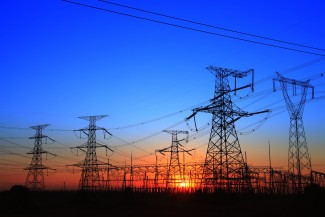Today’s electricity rate designs often contribute to high energy burdens and aren’t geared to incentivize transitioning homes off fossil fuels. But policymakers and regulators are exploring long-overdue new pricing structures.
Switching from fossil fuel-powered furnaces and boilers to energy-efficient electric heat pumps is imperative for mitigating climate change. The transition needs to make bills affordable for all households, particularly those with low and moderate incomes. Since heat pumps are more efficient than burning fossil fuels for building heat, switching will often reduce overall energy use, resulting in lower energy bills, especially as the cost of paying for the gas system increases. If the added electricity demand occurs when the existing grid is not stressed and has plenty of capacity to absorb new loads, building electrification can further reduce costs. But there are some regions of the country where electricity rates are high and the electric system can be strained in the winter, especially by fossil fuel system failures. To ensure an equitable transition, several states and utility regulators are adopting policies that ease energy burdens and modify electric rates to encourage electrification.
A new ACEEE white paper explores emerging options to design electric rates to accommodate the transition off fossil fuels and limit utility bills based on income with percentage of income payment plans (PIPPs).
Percentage of income payment plans evolve and expand
PIPPs cap monthly utility payments for income-eligible households at an affordable percentage of a household’s income, which is often defined as 6%. PIPPs keep bills affordable despite any increases in utility rates and are complementary to rate designs that encourage electrification.
A handful of states implemented PIPPs or similar programs, starting in the 1980s: Ohio, Colorado, Illinois, Nevada, Pennsylvania, Connecticut, California, New Jersey, and Maine. Virginia is the newest state to offer a PIPP for low-income electric-utility customers, and it ties the program to energy savings. Virginia’s PIPP caps bills at 6% of income for homes with fossil-fuel heating and 10% of income for households with electric heating. Notably, the law establishing Virginia’s PIPP requires a reduction in electricity consumption of participating households through weatherization or energy efficiency programs. Pairing these two strategies together is critical to provide short-term relief and long-lasting bill affordability for households.
Electricity rates can enable equitable building electrification
Some jurisdictions are modifying rates to make electrification more attractive. The Maine Public Utility Commission approved two pilot rate proposals for residential households with electric vehicles (EVs) or heat pumps served by the state’s two regulated electric utilities. One pilot introduces a seasonal rate that lowers the volumetric delivery charge (which is based on electricity use) during the winter to encourage heat pump usage. To compensate for the reduced revenue collected from this portion of the bill, the pilot increases the fixed monthly charge (that does not vary with electricity consumption) for households opting into the seasonal rate. The second pilot, called the “Electric Technology Rate” and designed for households using both heat pumps and EVs, offers the same monthly fixed charge as the seasonal rate pilot and offers reduced volumetric delivery charges year-round. Since fuel oil is common for home heating in Maine, both rate pilots encourage electrification through heat pumps, delivering energy savings, carbon reductions, and health benefits for Mainers.
California is considering a novel rate reform approach to meet decarbonization goals through electrification while lowering energy burdens. A 2022 law requires the California Public Utilities Commission to establish an income-based fixed charge which would institute a monthly fixed fee based on household income. This would allow utilities to lower volumetric charges for residents, with the aim of incentivizing adoption of electrification technologies like heat pumps and EVs. The success of this approach will ultimately depend on the details and implementation. Some stakeholders have raised concerns about the size of the fixed charges proposed by utilities, the effects on middle-income residents who use relatively little energy, and some administrative aspects of the income-verification process.
This is just a snapshot of some approaches that state officials and utility regulators are considering to meet decarbonization goals equitably. Though electricity rates can be reformulated to reduce energy burdens and help incentivize the use of efficient heat pumps, these new rate designs are often more complex than standard rates. There is no-one-size-fits-all approach, and regulators and utilities will need to take the time to navigate a transparent and inclusive stakeholder process to meet their particular goals.




